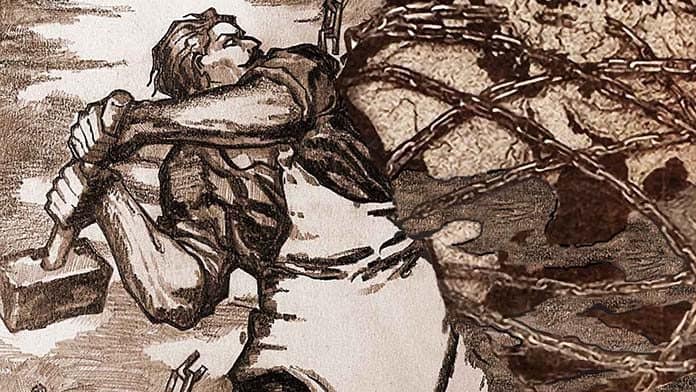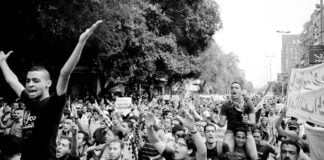Adam Adelpour looks at the impact of 1917 on the left and the workers’ movement in Australia
The Russian Revolution of October 1917 shook the world. Its reverberations reached across the globe to Australia and left a mark that still lasts today.
The revolution itself saw Russian workers and peasants topple the 300 year old Romanov Monarchy in February 1917. By October they had overthrown the capitalist Provisional government led by Alexander Kerensky. The October revolution placed an immense country of 150 million under the rule of democratic workers’ and peasants’ councils, called “soviets”.
It was the first time in human history that the exploited majority had seized power across an entire country.
The changes introduced by Soviet power were immense. Russia withdrew from the war and granted self-determination to nationalities formerly oppressed by the Romanov Empire. The landlords were dispossessed and the land handed to the peasants that worked it. Major industries were nationalised and placed under workers’ control. For the first time in the world divorce was fully legalised. Homosexuality was decriminalised. It was what Bolshevik leader Vladimir Lenin described as a “festival of the oppressed”.
The revolution was a beacon for all those that suffered under capitalism; its barbaric wars, its ceaseless exploitation and its brutal oppression. As Victor Serge, a French anarchist who joined the Bolsheviks, recalls:
“The newspapers of the period are astonishing… riots in Paris, riots in Lyon, revolution in Belgium, revolution in Constantinople, victory of the soviets in Bulgaria, rioting in Copenhagen. In fact the whole of Europe is in movement, clandestine or open soviets are appearing everywhere, even in the Allied armies; everything is possible, everything.”
The combination of anti-war sentiments and economic grievances had already created a working class radicalisation in Australia. In September 1917 the Australian ruling class was shaken by a general strike of 100,000 workers across NSW and Victoria; the biggest strike in Australian history.
At the same time, the campaign against conscription had mobilised unionists and the Labor Party rank-and-file, creating a mood of defiance.
Labor Prime Minister Billy Hughes was an enthusiastic supporter of the war effort, determined to bolster troop numbers that could no longer be met through voluntary enlistment. In 1916 he called a plebiscite designed to impose conscription. But against the backdrop of a growing Allied death toll, wage cuts and the savage British repression of the Easter Uprising in Ireland, Hughes only provoked working class rage. He lost the referendum and was expelled from the Labor Party.
As in Europe, Australia’s ruling classes were keen to discredit the revolution. Its effect on the Allied war effort enraged them; and they dreaded the Bolshevik example would inflame radicalism on the home front.
As early as June 1917, Billy Hughes said he would prefer a pro-war Tsarist tyranny to a revolutionary Russia that withdrew from the war. Hughes denounced the revolution as a German plot and, “the most formidable manifestation of German propaganda that… since the outbreak of the war has been unceasingly working in the territories of the Allies and has dealt a deadly blow to our cause.”
The capitalist press sang from much the same song sheet. The newspapers carried endless false reports about the imminent fall of the Soviet government, and labelled revolutionaries as German agents.
On 13 November, days after the revolution, the Sydney Morning Herald reported that “the liquidation of the Bolsheviks is only a matter of days”. This wishful thinking continued for some time. On 27 December it still insisted that the Soviets faced imminent defeat and Lenin was “preparing to flee”.
Workers welcome soviet power
In contrast, unionists in Australia reacted with a general enthusiasm to news of October, albeit often without a clear understanding of its significance. In most cases it was welcomed as a general victory for workers and a legitimate blow to tyranny.
Trades Halls flew red flags and passed motions declaring support. The ALP Federal Conference in Perth extended its congratulations. A NSW Labor Council resolution stated:
“We rejoice in the revolution in Russia and congratulate the people of that country on their efforts to abolish despotism and class privilege, and urge workers of other lands where similar conditions exist to follow their example with the same magnificent courage and determination.”
However, the phrase “where similar conditions exist” indicates the reservations that were already surfacing about the applicability of the Russian example in Australia. These were made more explicit by ALP supporters in the pages of the Australian Workers Union’s newspaper. Here it was argued that the Labor Party, purged of treacherous leaders, was a potentially revolutionary force; that in Australia, social democratic reformism would suffice to bring about socialism.
Labor and socialism
There were serious attempts to commit the Labor Party to introducing socialism through parliament in the period following 1917. The radicalisation within the labour movement, combined with the Russian example, saw a record number of successful motions advocating nationalisation at the ALP conference in 1919.
There was serious leftward pressure on the party both as a product of its leaders’ betrayals and the desire to emulate the Russian Bolsheviks in forming a separate Communist Party. The General Secretary of the Miners Federation led a number of unions to break away in 1919 and form the “Industrial Socialist Labor Party”. The NSW Labour Council participated in the formation of the Communist Party, through the influence of its Secretary Jock Garden.
In response, the ALP Federal Executive call a conference of all trade unions to “find a surer and shorter road to the socialist objective” in 1920. The 1921 ALP Federal conference adopted a “socialist objective”, stating the ALP aimed at the “democratic socialisation of industry, production, distribution and exchange”. Ted Theodore, the Queensland ALP Premier, complained that if the objective was adopted they, “might as well change their name to the Communist Party and be done with it”. However, he had nothing to fear. After seeing off the pressure from the left, the ALP leadership qualified the objective to the point of meaninglessness, and shunted it off into obscurity.
The objective survives officially even today. However, its adoption ultimately represented an attempt to keep left-wing elements inside the Labor Party where they remained captive to its right-wing parliamentary leadership.
The small socialist groups that existed in Australia at the time recognised the significance of Russia’s example far more clearly. They saw in it a vindication of the revolutionary strategy they had been advocating since the 1880s. They responded with a flurry of meetings that crowded parks and street corners around the country.
Russian political exiles in Australia also helped to shape understanding of the October revolution.
Many of them were political veterans who had escaped prison after the earlier attempted revolution had been crushed in 1905. Among them were Bolsheviks like Peter Simonoff, who became the Bolshevik consul-general in Australia, and Alexander Zuzenko, who headed the Union of Russian Workers in Brisbane.
The views of Russian exiles had a considerable impact among Russian migrants more generally. At the time of the October revolution, police files on labour unrest at Queensland’s Mount Cuthbert mines complain that 70 per cent of the Russians working there supported the revolution.
Communist Party of Australia
The Russian revolution only succeeded due to the new kind of mass revolutionary socialist party built before the revolution. The new Soviet government almost immediately set to work trying to spread revolution beyond Russia. It established the Communist International or Comintern, aimed at promoting the formation of revolutionary socialist parties around the world.
In October 1920 a conference of socialist and left-wing groups in Sydney resolved to form the Communist Party of Australia (CPA) and seek affiliation. Its formation was the most significant long-term consequence of the Russian revolution in Australia.
The CPA aimed to draw together the revolutionary minority of workers into a party in the tradition of the Russian Bolsheviks. This would be a party of activists that could win influence in the working class through leading struggles. This stood in sharp contrast to the ALP which aimed to encompass the widest possible sections of the working class in order to win elections. At first the CPA struggled to chart a course between the sectarian anti-Labor approach of some of the socialist sects that founded it and an unprincipled effort to curry favour inside the Labor Party by other sections.
The onset of the great depression in the 1930s saw the CPA develop into a mass activist party. As the existing union leaderships beat a path of retreat, the CPA organised the thousands of the unemployed and won wage increases on relief projects through the Unemployed Workers’ Movement. It also built a rank-and-file base in the unions, leading major disputes from the cane fields of Queensland to the mines of Wonthaggi in Victoria. Following the Second World War it could boast a membership of around 12, 000 and a powerful base in the unions, not least amongst miners and metalworkers.
But Russia’s revolution remained isolated. By 1928 the last elements of socialism had been replaced by the monstrous Stalin dictatorship. But the CPA continued to see Russia as socialist and obey every instruction from Moscow.
As the horrors of Stalinism became undeniable by the 1960s, the Communist Party began drifting to the right, eventually dissolving itself when Russian Stalinism collapsed in the early 1990s.
But the early years of the CPA and its effort to build a socialist party in Australia continue to hold lessons about how to build the revolutionary organisation that is still needed today.





